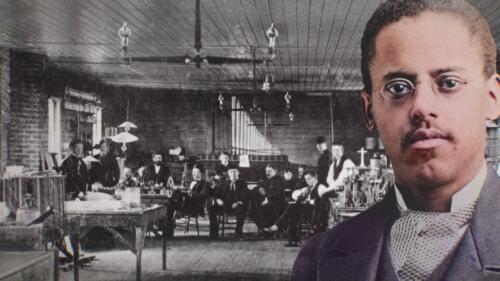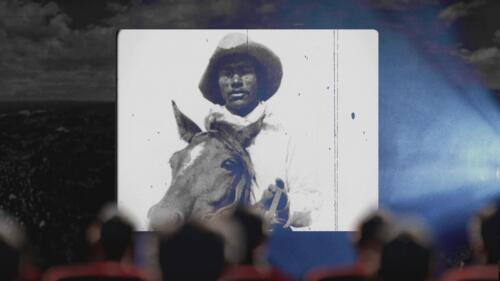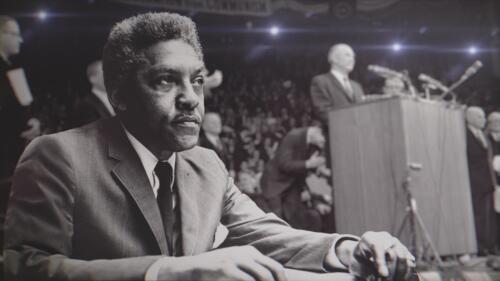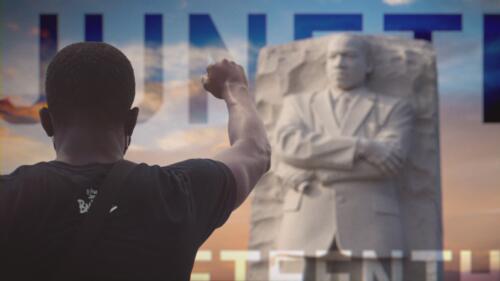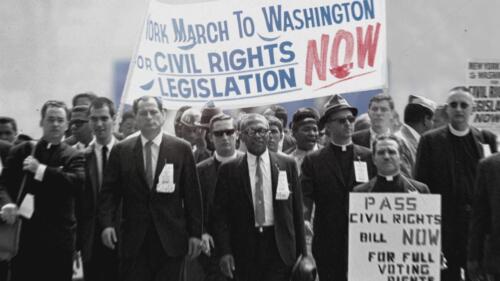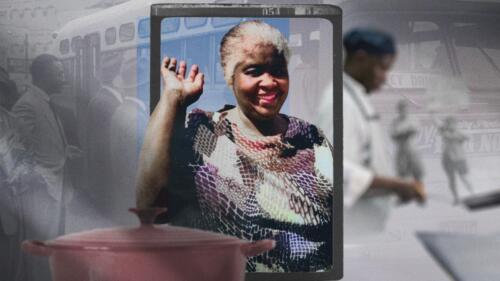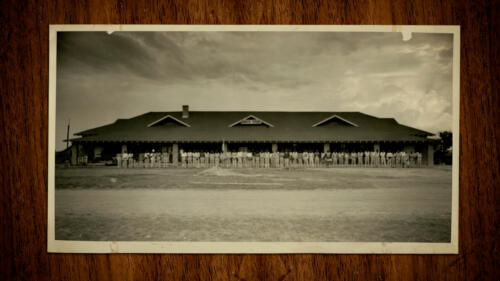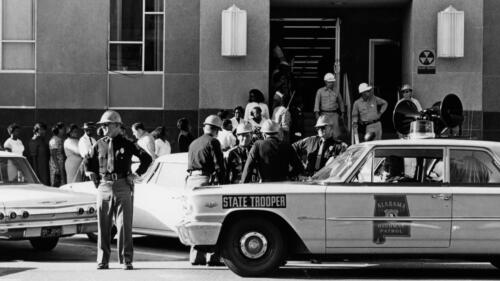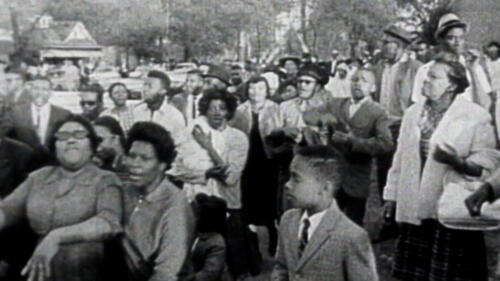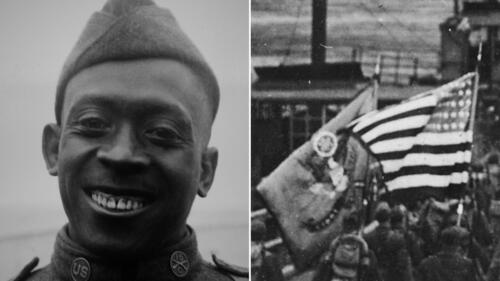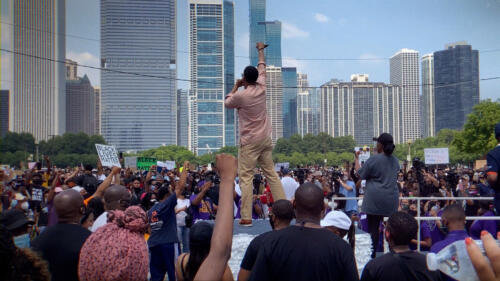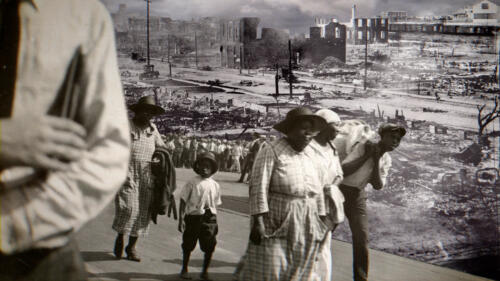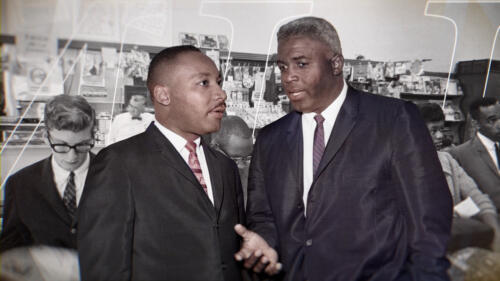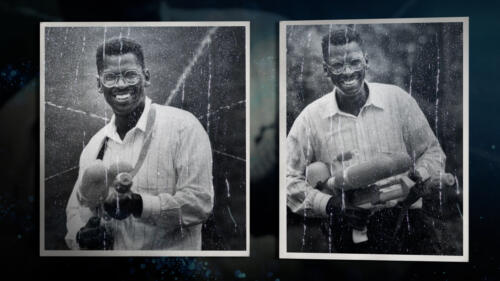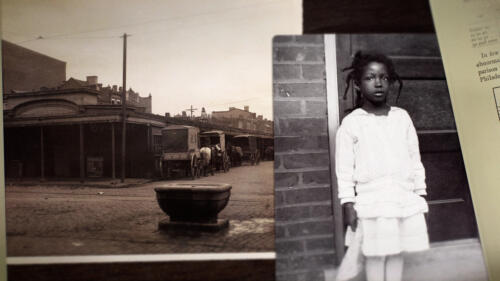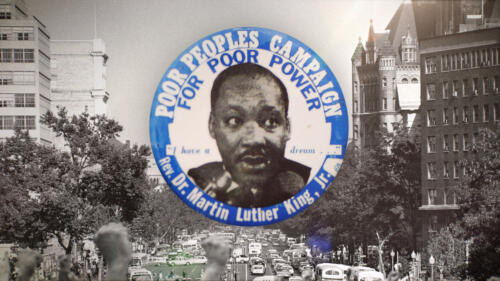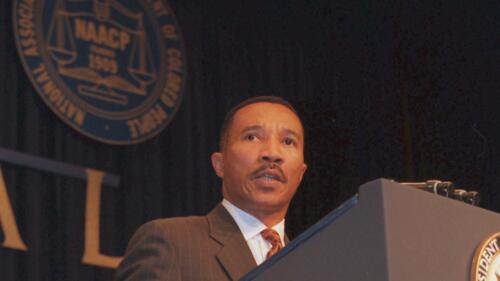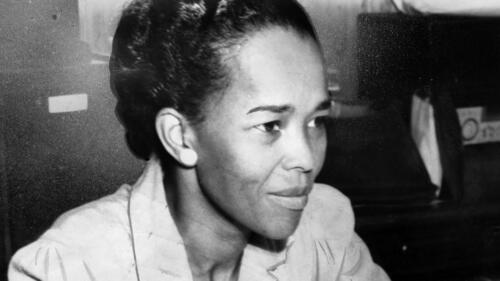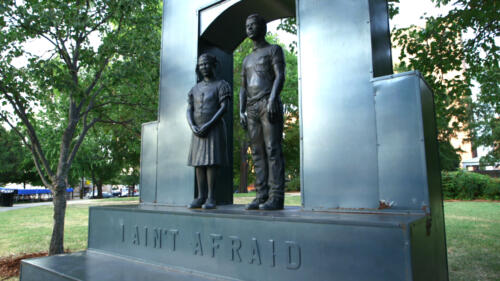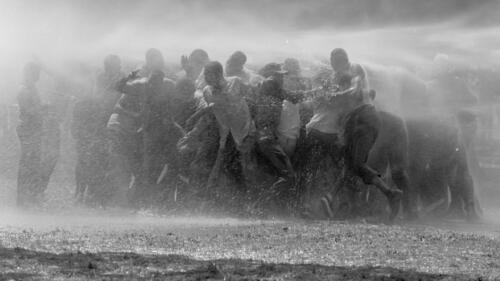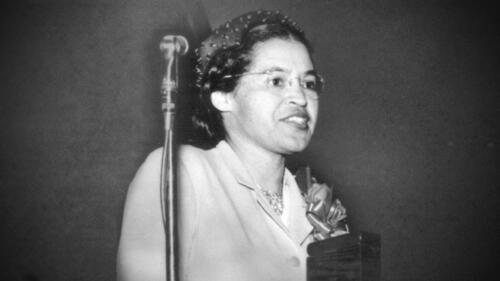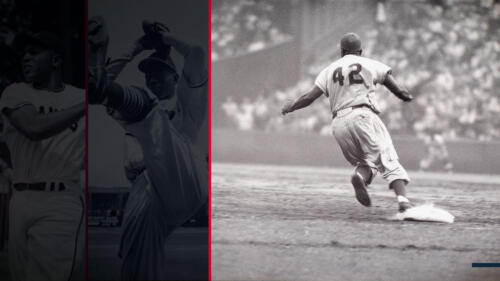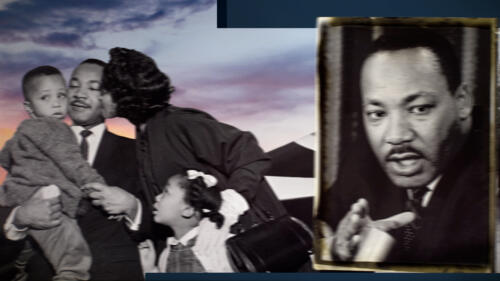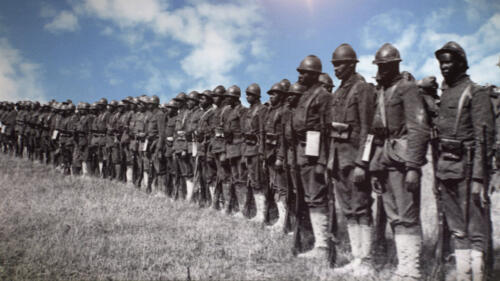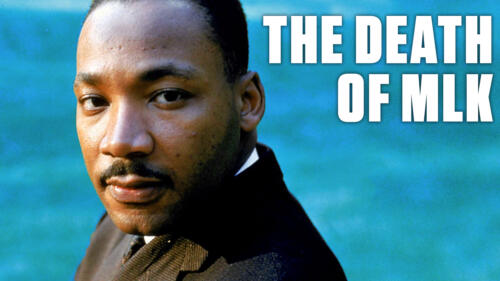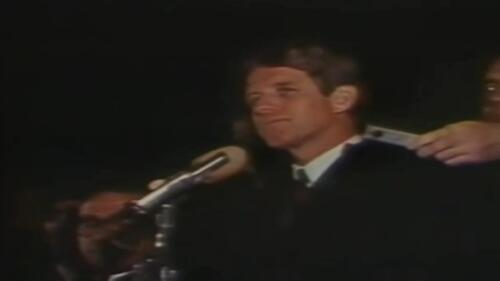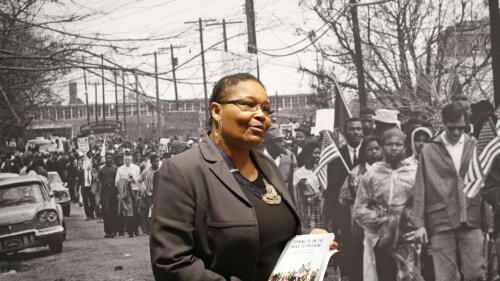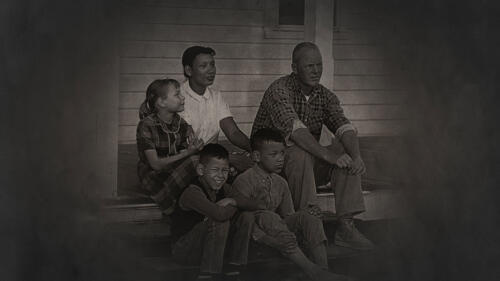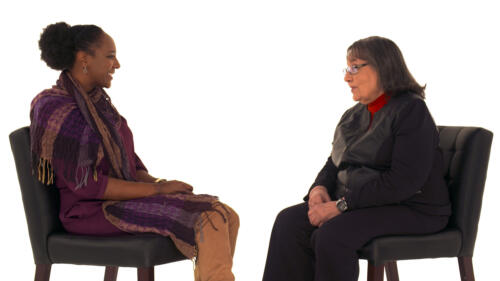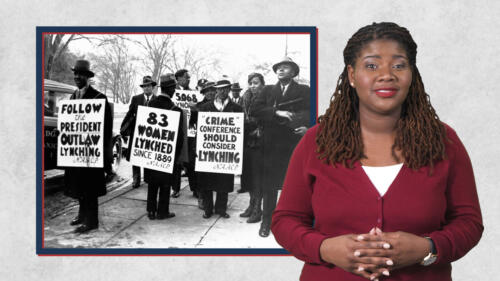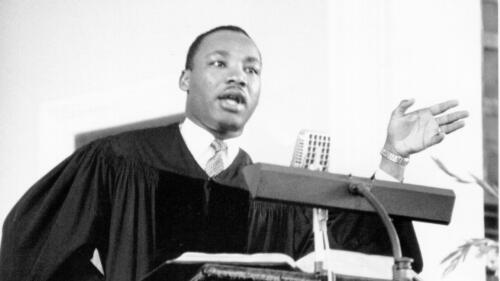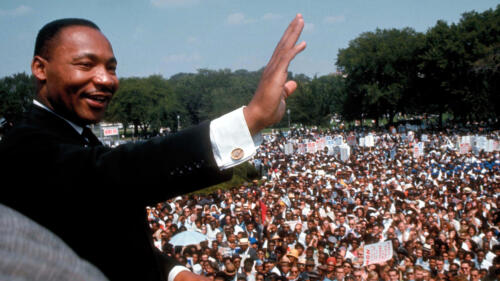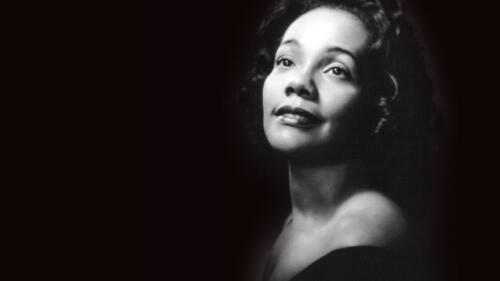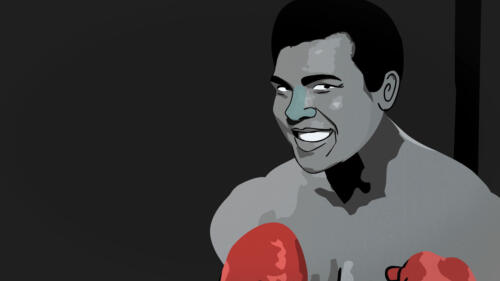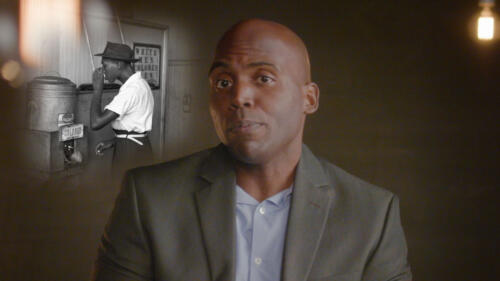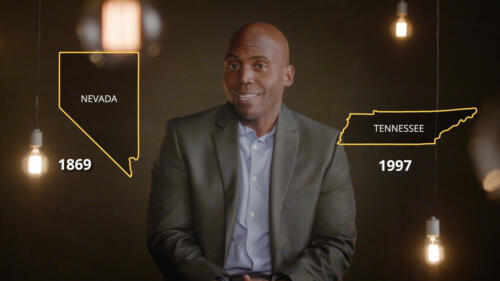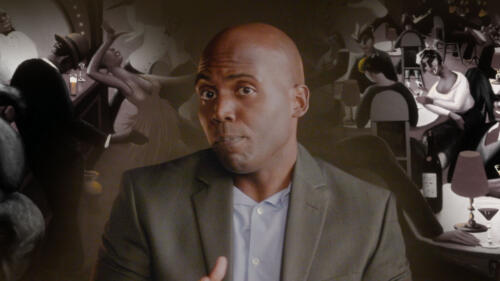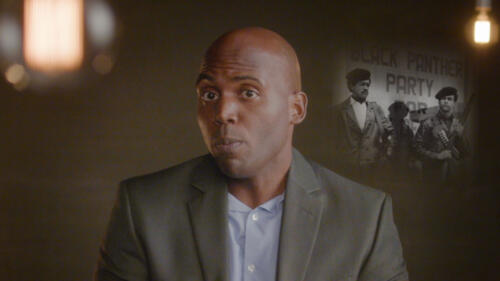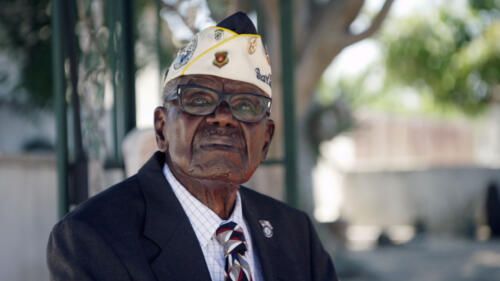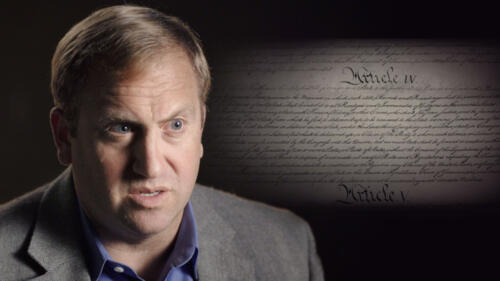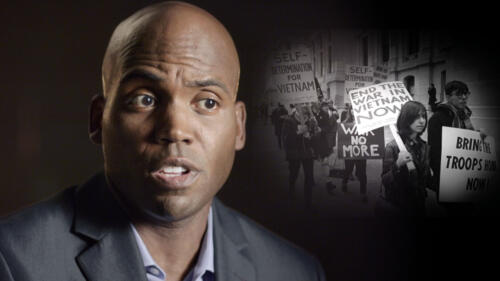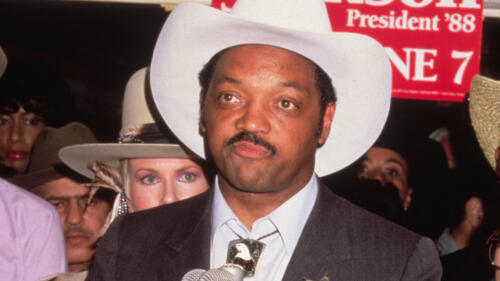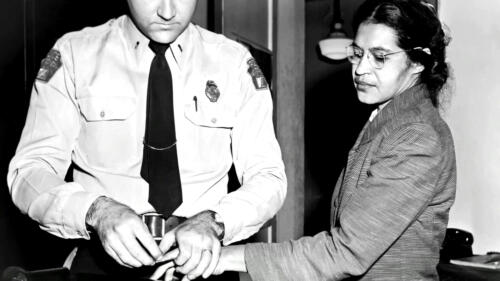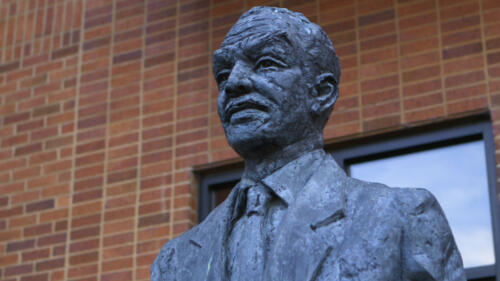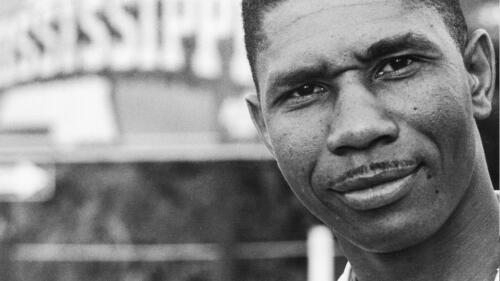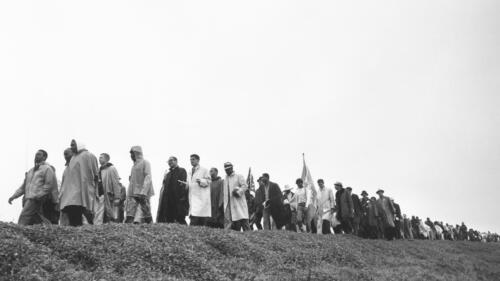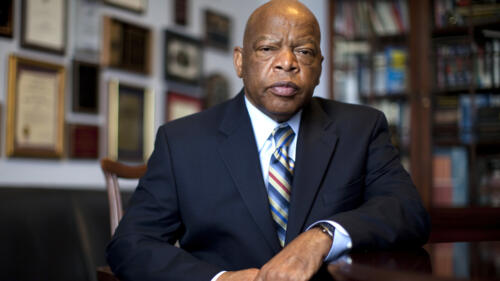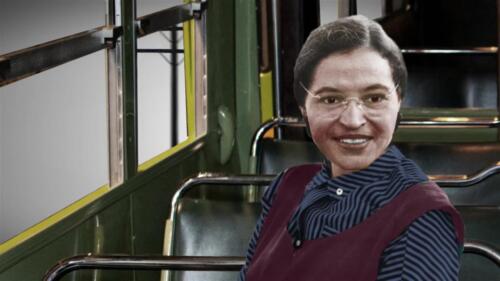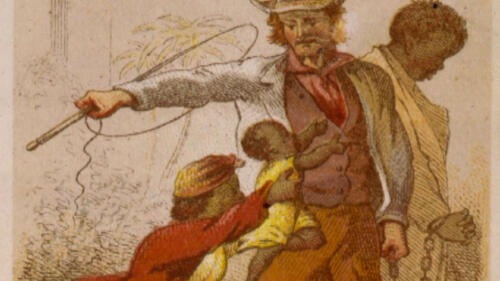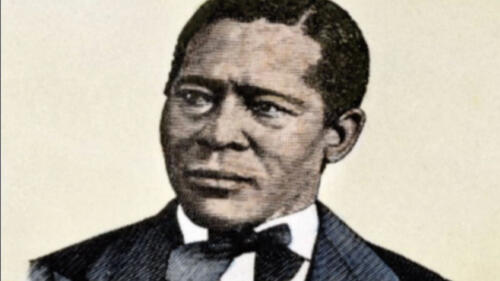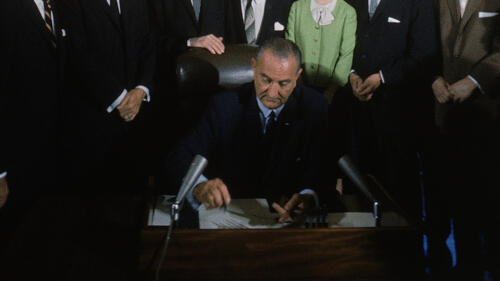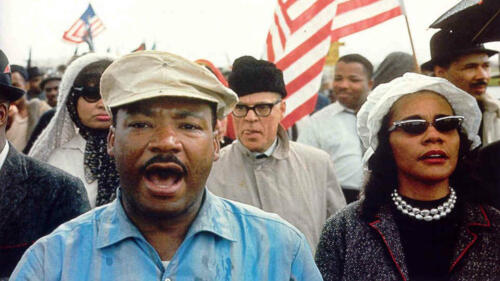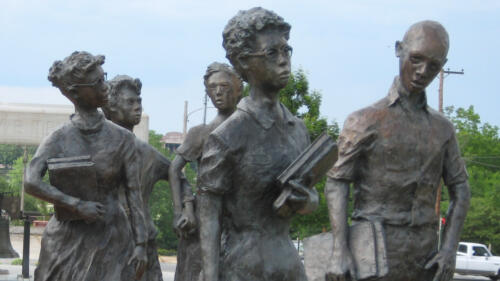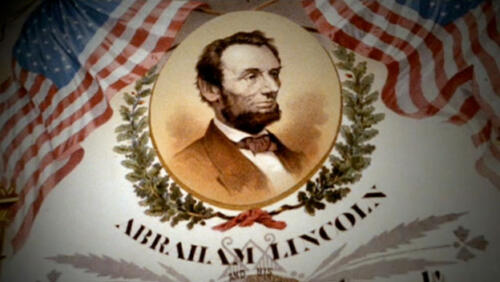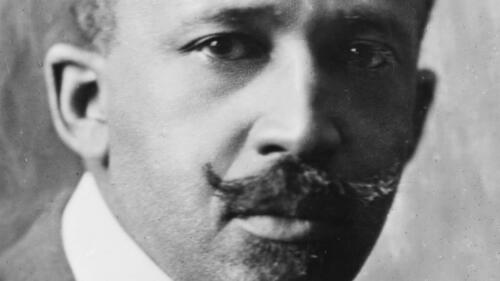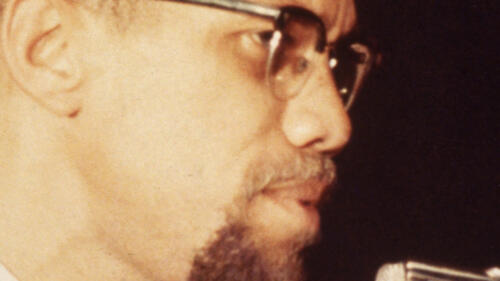Black History
African Americans have played a central role in shaping U.S. history. From slavery and its abolition to the Great Migration, the civil rights movement and military, scientific, cultural and political achievements, explore key moments, milestones and figures in Black History.
Featured Overview
Explore the enduring legacy of Black resistance, intellect and activism through the stories of five key figures.

Featured Overview
Explore the enduring legacy of Black resistance, intellect and activism through the stories of five key figures.
Start Here

African American history began with slavery, as white European settlers first brought Africans to the continent to serve as enslaved workers. After the Civil War, the racist legacy of slavery persisted, spurring movements of resistance. Learn important dates and facts about the African American experience.

Black inventors changed the way we live through their many innovations, from the traffic light to the ironing board.

From jazz and blues to poetry and prose to dance and theater, the Harlem Renaissance of the early 20th century was electric with creative expression by African American artists.

From a bus boycott to Freedom Rides to a march for fair housing, here are seven events that triggered change.
Black History Month
Black History Month
A brief look at the history of African Americans and Black History Month.
2:20 watch
3 Key Movements in Black History
Explore All Related Topics

Lucille became King's lifelong companion and muse.

The Posse Comitatus Act addressed Southern politicians' objections to military enforcement of Reconstruction following the Civil War.
Born to formerly enslaved parents, Lewis Latimer drew Bell’s telephone plans and later advised Edison on inventing the light bulb.

These hard-hitting performances pulled no punches.
Nearly a century before Rosa Parks, Elizabeth Jennings challenged segregated transit in New York City.
In 1784, James Hemings went to Paris with Jefferson to learn French cooking—unknowingly shaping American cuisine for decades to come.
Explore the enduring legacy of Black resistance, intellect and activism through the stories of five key figures.
Before the cowboy image Americans know today existed, a formerly enslaved man became the country’s first cowboy.
Bayard Rustin, a key advisor to MLK Jr., helped plan the 1963 March on Washington but had to work in the shadows as a gay man.
In the 1960s, civil rights leaders revived the celebration of Juneteenth and brought it back into American life.

A small unit of African American soldiers buried thousands of Americans killed in combat in Europe.

As a first-grader, her image became an emotional symbol for civil rights and educational equality.

Stylish attire became a potent form of cultural defiance.

African American riders won 15 of the first 28 Kentucky Derbies.

Nineteenth-century Black newspapers helped broadcast African American diversity and agency, lighting the way towards a post-slavery era.
When President Harry S. Truman signed Executive Order 9981, it helped other parts of American society to accept desegregation.
Freedom Summer 1964 was a massive voter registration campaign in Mississippi and the first interracial movement of its kind.

Abolitionist Frederick Douglass called the Supreme Court ruling 'a vile and shocking abomination.' It inspired Abraham Lincoln to help speed slavery's 'ultimate extinction.'

A diverse coalition of mostly student activists converged in Mississippi in 1964 to challenge efforts to suppress the African American vote.
In 1964 the FBI sent an anonymous package to Dr. Martin Luther King Jr., threatening to expose his private life.

On October 30, 1974, Muhammad Ali, a.k.a. "The Greatest," beat George Foreman to reclaim the world heavyweight boxing title in a fight held in Kinshasa, Zaire (now the Democratic Republic of the Congo).
In the 1950s, more than 40,000 citizens of Montgomery, Alabama, boycotted the city's segregated bus service for 381 days.
John Lewis was an American politician and civil rights activist who put his life on the line to lead countless protests for justice, in this clip from Season 1, "Bloody Sunday."
Peaceful protestors are faced with violence by police officers in Selma, Alabama, in 1965.
Birmingham is a city under siege, ruled by a strict segregationist.

In order to avoid detection, Harriet Tubman and others used a variety of codes and signals to communicate along the route to freedom.

These visual artists helped modernize and reclaim African American portrayals through groundbreaking painting, sculpture and photography.
Henry Johnson served in the 369th Infantry Regiment, a unit of the U.S. Army that was composed primarily of African American soldiers and later became known as the "Harlem Hellfighters." Learn more in this scene from "Harlem Hellfighters".

From a bus boycott to Freedom Rides to a march for fair housing, here are seven events that triggered change.

In 1909 African American Matthew Henson trekked with explorer Robert Peary, reaching what they claimed was the North Pole. Who got there first?

Coretta Scott King led on issues ranging from civil rights to gay rights to opposing apartheid, the Vietnam War and ending poverty.

During WWII, Trezzvant Anderson embedded with the Army’s first Black tank squad to see combat. He deployed their stories in the broader fight for equality.

Harlem in the 1920s and '30s offered the Black creative class a sense of pride and possibility. It also had cross-dressing blues singers, extravagant drag balls and literary and artistic salons.

Between 1956 and 1958, Gibson became the first Black player to win the French Open, Wimbledon and the U.S. Nationals. But none of it came easy.

Led by Mary McLeod Bethune, this informal network of advisors was the first group to press for civil rights from within the federal government.
In the 1960s, Civil Rights Leaders brought the celebration of Juneteenth back into American life.
Greenwood Tulsa became the site of the deadliest race massacre in American history.
Jackie Robinson's legacy extends well past his iconic baseball career.

The scholar and activist was sought and then arrested by the FBI in 1970—and the experience informed her life's work.
Before becoming a baseball icon, Jackie Robinson dominated the football field in college.
Bayard Rustin, one of MLK's key advisers, overcame countless personal challenges as he guided the fight equal rights.

Langston Hughes was a defining figure of the 1920s Harlem Renaissance as an influential poet, playwright, novelist, essayist, political commentator and social activist. Known as a poet of the people, his work focused on the everyday lives of the Black working class, earning him renown as one of America’s most notable poets.
In the 1800s, train crashes were common—until Granville T. Woods, known as the "Black Edison," revolutionized rail communication.
Lonnie Johnson—a nuclear engineer—invented it by accident.

The poet and author of 'I Know Why the Caged Bird Sings' constantly tackled new roles, including streetcar conductor, dancer and journalist.

Communities across the U.S. required home deeds to include clauses that explicitly denied buyers based on race, ethnicity or religion.

As chief justice of the U.S. Supreme Court, Warren led a court that decided multiple historic rulings on civil rights cases.
W.E.B. Du Bois laid the foundation for the study of systemic racism in America's cities.

As the Civil War was ending, recently freed Black people were promised land to start independent lives—but Lincoln's assassination led to that plan's demise.

After WWII, racial barriers in sports slowly began to drop. Jackie Robinson was not the only athlete on the front lines of these changes.

The 14th Amendment's guarantee to "due process" provided a basis for these five Supreme Court rulings that have impacted Americans' lives.

Nathan 'Nearest' Green, who taught Jack Daniel the art of whiskey distillation, went unacknowledged for more than 150 years.

The six-time MLB All-Star wasn't just a pioneering athlete. His efforts launched a cascade of civil rights advances.

Moses Fleetwood Walker played for a Major League Baseball team in the 1880s.

These jurists had to break barriers to get to the bench—and didn't stop once they got there.

Despite Jim Crow oppression, Walker founded her own haircare company that helped thousands of African American women gain financial independence.

Walter White leveraged his fair complexion to investigate some of the country’s worst attacks against African Americans.

Starting in the early 20th century, African American athletes began competing in the Games—and shattering records.

The two 19th century leaders had deep respect for each other. But one was openly—and harshly—critical.

Since the abolishment of slavery, the U.S. government has passed several laws to address discrimination and racism against African Americans.

These writers were part of the larger cultural movement centered in New York City’s Harlem neighborhood and offered complex portraits of Black life in America.

From 'I Have a Dream' to 'Beyond Vietnam,' revisit the words and messages of the legendary civil rights leader.

Ordinances restricting train travel, intimidation and other Jim Crow tactics were enacted to hinder Black people from fleeing racial and economic oppression.

Malcolm X, an African American nationalist and religious leader, was gunned down by three men while addressing his Organization of Afro-American Unity in New York City on February 21, 1964. He was 39.

Cumberland Posey was a dominant figure in Negro League baseball and the first African American athlete at two universities.

In a time when military pensions were a large part of the federal budget, Black women faced unique challenges in securing compensation.

As African Americans achieved economic success in Atlanta in the early 1900s, the city simmered with racial strife that was further inflamed by yellow journalism.

As racism impacted both sides of the Atlantic, ‘Brown Babies’, the children born to Black GIs and white European women, faced an uncertain future.

As Adolf Hitler and the Nazi Party loomed over Europe, an American and a German boxer squared off in the ring. They'd meet again two years later.

Benjamin Banneker was just 17 when he first studied the overwhelming broods of cicadas emerging from the ground in 1749.

In the wake of the passage of the 15th Amendment and Reconstruction, several southern states enacted laws that restricted Black Americans' access to voting.
Colonel Charles Young overcame racism to rise through the ranks and create his legacy in the great outdoors.
In the last year of his life, Martin Luther King Jr. expanded his cause beyond Civil Rights, and advocated to lift all Americans out of poverty.
Kwanzaa didn't just appear spontaneously – it was specifically designed to heal a struggling community.

Through the decades, the right to vote in U.S. elections has seen massive change and expansion.

The March 8, 1971 fight between Muhammad Ali and Joe Frazier unfolded against the backdrop of a nation tearing itself apart over civil rights and the war in Vietnam.
From the NAACP to the Black Lives Matter movement, we're counting down the biggest civil rights turning points in every decade.

He believed that, as soldiers, men of color could gain self-respect, self-defense skills and an undeniable justification for the rights of citizenship.

From the 1968 assassination of Martin Luther King, Jr., to the 2008 election of Barack Obama, to widespread global protests declaring Black Lives Matter in 2020, African American history in the United States has been filled with both triumph and strife.

For a 14-year period, the U.S. government took steps to try and integrate the nation's newly freed Black population into society.

Since 1968, 11 Black women have entered the running for the highest office in the nation.

These shows helped broaden the range of African American experiences portrayed on television.

In his 1984 presidential run, Jackson sought to unite a multiracial, multicultural group of Americans.

The Civil Rights Act of 1964 was landmark legislation that required decades of actions—and setbacks—to achieve.
Throughout American history, many have had to fight to advance the ideals of liberty and equality. Learn about 9 lesser known civil rights leaders who were crucial to their causes, in this episode of History Countdown.

Their coordinated efforts to integrate a white officers' club set an example that wasn't lost on leaders of the burgeoning civil rights movement.

Martin Luther King Jr.'s 'I Have a Dream' speech ranks among the most famous in history, but there are a few lesser-known facts about the 1963 moment.

James Polk bought 19 people during his presidency, at least 13 of whom were children.

A. Philip Randolph proved instrumental in urging FDR to open up the Marines—and other military branches—to African American recruits.

Whether as soldiers, spies, recruiters or medical personnel, African Americans made crucial contributions to the Union cause.

From shipyards to factories to government administrative offices, Black women worked to battle authoritarianism abroad and racism at home.

Executive Order 9981, one of Truman's most important achievements, became a major catalyst for the civil rights movement.

Facing a dwindling movement in Alabama, civil rights leaders recruited Black students to revive the march to end segregation.

Most hospitals turned them away—or sent them to the basement for treatment.

The black codes effectively continued enslavement for African Americans by restricting their rights and exploiting their labor.

A conspiracy theory emerged during the Red Scare, blaming “the Bolsheviki” for protests and violence.

Some 1.2 million Black men served in the U.S. military during the war, but they were often treated as second-class citizens.

Obtaining the vote was just one item on a long civil rights agenda.

When four Black students refused to move from a segregated Woolworth's lunch counter in 1960, nation-wide student activism gained momentum.

With the slogan, "I am a man," workers in Memphis sought financial justice in a strike that fatefully became Martin Luther King Jr.'s final cause.

John Lewis was arrested 40 times during the civil rights movement.

By promoting the Ku Klux Klan and overseeing segregation of the federal workforce, the 28th president helped erase gains African Americans had made since Reconstruction.

From spirituals to ballads, funk and hip-hop, these songs have provided a soundtrack to the pride and struggle of African Americans through the centuries.

Following Nat Turner's rebellion of 1831, legislation to limit Black people's access to education intensified. But enslaved people found ways to learn.
From May 2 to May 5, 1963, thousands of children left their schools in Birmingham, Alabama, to march for civil rights. Police officers responded by using water cannons and dogs to attack and then arrest the children.
They will never get their names in the history books, yet the foot soldiers of the Civil Rights movement changed history for the better through their unsung acts of courage.
Those who knew Rosa Parks personally discuss her legacy and their memories of her life.

When the governor of Arkansas failed to integrate Central High School, President Eisenhower called in federal troops to protect the Little Rock Nine.

Matilda McCrear came to the United States on the Clotilda, the last known slave ship to arrive on U.S. shores.
Locked out of Major League Baseball, black players looked to the Negro Leagues to be treated like the elite athletes they were. And it was all possible because of one man: Rube Foster.
Martin Luther King Jr. was a hugely influential figure in American life, and surprised many that he never chose to enter the political arena. But he almost did.
Facing racism and segregation in their own country, the Harlem Hellfighters became one of the most decorated American combat units serving in World War I.

With a focus on racial pride and self-determination, leaders of the Black Power movement argued that civil rights activism did not go far enough.

From jazz and blues to poetry and prose to dance and theater, the Harlem Renaissance of the early 20th century was electric with creative expression by African American artists.

The illustrated book was first printed in 1957 and encouraged young people, including future Congressman John Lewis, to stage nonviolent protests.

Long after the Mississippi justice system gave up on the murder prosecution, Myrlie Evers kept the case alive.

The 15th Amendment was supposed to guarantee Black men the right to vote, but exercising that right became another challenge.

Tubman applied intelligence she learned as an Underground Railroad conductor to lead the Combahee Ferry Raid that freed more than 700 from slavery.

From elaborate disguises to communicating in code to fighting back, enslaved people found multiple paths to freedom.

Mexican American families in California secured an early legal victory in the push against school segregation.

In the 20th century, the country issued reparations for Japanese American internment, Native land seizures, massacres and police brutality. Will slavery be next?

When dozens of brutal race riots erupted across the U.S. in the wake of World War I and the Great Migration, black veterans stepped up to defend their communities against white violence.

After a 1954 ruling declared that segregated schools were unconstitutional, a decades-long effort to integrate them through busing was often met with violent protests.

Before the 'redistricting revolution,' some states had gone more than half a century without updating their election maps.

It was torched and then sunk to the bottom of a river, but historians say they have now identified the remains of the last ship to carry slaves to the U.S.

Redoshi was taken to America on the Clotilda, the last known slave ship. She lived until 1937.

Starting 50 years before the end of slavery, the American Colonization Society moved 12,000 people from America to West Africa.

It's estimated that 40 percent of slave owners may have been white women.

Its title—'The Negro'—seemed innocuous enough. But the revolutionary civil rights leader intended it to invoke a much harsher meaning.

Black inventors changed the way we live through their many innovations, from the traffic light to the ironing board.

They were overworked, underpaid and demeaned, but generations of porters on the Pullman Palace Car Company helped promote the rights and futures of African Americans.

Abdulrahman Ibrahim Ibn Sori was West African royalty before he was enslaved on a Mississippi plantation.

In the early 1700s, Onesimus shared a revolutionary way to prevent smallpox.

The 6888th Central Postal Directory Battalion, made up of African American women, helped boost the morale of millions of Americans during WWII.

President Franklin D. Roosevelt feared losing Southern support for his New Deal legislation.

“Outside of my immediate family, his was the greatest friendship I have ever known or experienced,” photographer Flip Schulke said of Martin Luther King Jr.

There were multiple memorials and tributes to the fallen civil rights leader.
In March of 1968, Martin Luther King Jr. traveled to Memphis, Tennessee to lead a group of striking sanitation workers in peaceful protest amid threats against his life. The threats were real. Martin Luther King Jr. was assassinated in Memphis on April 4, 1968.

The civil rights leader was attacked in 1958 by Izola Ware Curry, a decade before his murder.

State constitutions were rewritten to suppress the votes of newly enfranchised African Americans.

The so-called “Slave Bible” told of Joseph’s enslavement but left out the parts where Moses led the Israelites to freedom.

The former slave, whose brilliant prose and soaring oratory pricked the conscience of a nation, carefully shaped his own myth. Details like a white second wife didn't fit.

After the United States abolished slavery, Black Americans continued to be marginalized through enforced segregated and diminished access to facilities, housing, education—and opportunities.
America's first self-made female millionaire began her path to success with a dream and $1.50 to her name.

In the first presidential election, only white, land-owning men were allowed to vote—and some founding fathers wanted to keep it that way.

Having grown up in the segregated South, Ashe became the first Black man to win the U.S. Open in 1968. The victory helped him find his voice on a wide array of social-justice issues.

Fredi Washington embraced her race at the height of Jim Crow.

In navigating lives of privation and brutality, enslaved people haggled, often daily, for liberties small and large.

During the 19th century, women were largely barred from the legal profession, but that didn't stop Ray from trying to break in anyway.

An offhand response to an ad from the KKK led to an extensive investigation for detective Ron Stallworth.

The recordings, which became a national phenomenon, captured artists like Bessie Smith and Louis Armstrong—but most artists were exploited and forgotten.

Death threats drove Wells from Memphis, but she was not silenced and would find her home in Chicago.

Before President Truman desegregated the U.S. military on July 26, in 1948, Black nurses had fewer—and less desirable—opportunities in the U.S. Army Nurse Corps.

After Michael Donald’s brutal murder, his mother, Beulah Mae, fought for justice beyond the conviction of his killers.

Bayard Rustin was an indispensable force behind the civil rights movement...and openly gay.

Between the 1860s and the 1920s, white Americans pushed out thousands of black residents from their communities.

Prom started in the 19th century, segregated proms continued into the 21st century, and other things you might not know about prom.

Centuries of prejudice and discrimination against blacks fueled the civil rights crusade, but World War II and its aftermath were arguably the main catalysts.

Newly uncovered court records reveal what happened after the Civil Rights icons were arrested in Montgomery, Alabama.

How does one share this painful chapter of America's past? An historian, and mother, describes the indelible impact of her family's visit to the National Memorial for Peace and Justice.

The Supreme Court ruling was met with inertia and, in many states, active resistance.

As a group of black teenagers awaited execution, the Communist Party and the NAACP bickered over their legal defense.

A new memorial and museum in Montgomery, Alabama, challenges the nation to acknowledge its crimes.

While no group escaped the economic devastation of the Great Depression, few suffered more than African Americans, who experienced the highest unemployment rate during the 1930s.

Best known for breaking Major League Baseball's color barrier, Robinson is also remembered for his poise on and off the field.

These African American heroes battled the Nazis, but were still treated as second-class citizens in their home country.
Martin Luther King, Jr. was assassinated on April 4, 1968. That same night, Robert F. Kennedy delivered the devastating news of King’s death to a group of African American supporters at a campaign rally. This is audio and video from that event.

Rev. Jackson, who was part of King’s inner circle in 1968—and witnessed his assassination—weighs in on that shocking moment, its turbulent aftermath and carrying forth the dream.

Deceptively simple doll tests helped convince the Supreme Court to strike down school segregation.

Reflecting on his life that stormy night in Memphis, King considered a panoramic view of the past.

'Freedom Day' didn’t succeed, but it made de facto school segregation the talk of Chicago.

Now an icon of the Civil Rights Movement, Nash was arrested dozens of times for non-violent protests—including while six months pregnant.

Slavery was so profitable, it sprouted more millionaires per capita in the Mississippi River valley than anywhere in the nation.
Afros, cornrows, dreadlocks and beyond: The ancient roots of Black hairstyles.
Bree Newsome discusses the impact that everyday citizens like Lynda Blackmon Lowrey had on the civil rights movement in honor of Black History Month.
Learn about the landmark Supreme Court decision in Loving v. Virginia, which legalized interracial marriage in the United States.
Diane Nash and Bree Newsome discuss past and present forms of civil rights activism in honor of Black History Month.
How did the NAACP (the National Association for the Advancement of Colored People) get its start? What needs and issues does it address, and what has it accomplished since it was founded in 1909?

They cried. They reminisced. The master told Douglass he would have run away, too.

He kept America focused on hard truths because he believed it necessary to a strong democracy.

The new state’s leaders banned slavery—but tried to kick free Black people out.

The Panthers’ popular breakfast programs put pressure on political leaders to feed children before school.

Though their stories are sometimes overlooked, these women were instrumental in the fight for equal rights for African Americans.

He was an athletic phenomenon who broke the NFL's "color barrier."

The last ship to bring slaves to the U.S. was torched to hide the crime. Its remains may have just been found.

In later speeches, his language became more assertive, as he urged those with privilege to reject the comfort of the status quo—and jump into the fray.

It took 15 years of persistent lobbying for MLK Day to be declared a national holiday.

Why has history left out this piece of Rosa Parks' story?

The civil rights movement was an organized effort by black Americans to end racial discrimination and gain equal rights under the law. It began in the late 1940s and ended in the late 1960s.

Watch & learn about the political & social backdrop to Martin Luther King Jr.'s famous 'I Have A Dream' speech and the rhetorical devices that helped its message.

Loving v. Virginia was a 1967 Supreme Court case in which the court’s ruling struck down state laws banning interracial marriage throughout the United States.

Susan B. Anthony and Elizabeth Cady Stanton focused on white women’s suffrage over voting rights for all women.

The Black Panthers made up a political organization founded in 1966 by Huey Newton and Bobby Seale to challenge police brutality against African Americans. Dressed in black berets and black leather jackets, the Black Panthers organized armed citizen patrols of Oakland and other U.S. cities.
On September 30, 1956, Martin Luther King Jr.’s house was bombed by segregationists in retaliation for the success of the Montgomery Bus Boycott.
From 1954 until 1960, Martin Luther King Jr. was the pastor of the Dexter Avenue King Memorial Baptist Church, the only church where MLK pastored and the site where he began his Civil Rights activism.
On the night of January 27, 1956, when he was just 27 years old, Martin Luther King Jr. received a threatening phone call that would cause his life to change forever.
After her husband became pastor, Coretta Scott King joined the choir at the Dexter Avenue King Memorial Baptist Church. Hear two of her friends and members of the congregation remember Mrs. King’s legacy and her voice.

Did it help or hurt the civil rights movement?

The president’s forward-thinking decision is still celebrated, but the reality was more complicated than it appears.

Would-be mail thieves didn’t stand a chance against Stagecoach Mary. The hard-drinking, quick-shooting mail carrier sported two guns and men’s clothing.

It didn't end when Central High School was integrated.

His use of Black bodies as medical test subjects falls into a history that includes the Tuskegee syphilis experiment and Henrietta Lacks.

Eight years to the day after Till’s death, some 250,000 people gathered in the nation’s capital for the iconic March on Washington for Jobs and Freedom.
In 1954, a Kentucky boy’s bike was stolen. A cop told him to fight back—by learning to box.

The failed escape attempt inspired "Uncle Tom's Cabin."

Nearly 50 years before the March on Washington, African Americans took to the streets of New York to protest racial inequality.

In the 1950s, the beach wasn’t open to everyone.

The United States may have been founded on the idea that all men are created equal, but during the late 18th and early 19th centuries, slaveholding was common among the statesmen who served as president. All told, at least 12 chief executives—over a quarter of all American presidents—enslaved people during their lifetimes. Of these, eight […]

After the colossal success of “Invisible Man,” Ralph Ellison struggled for 40 years to finish his second novel, “Juneteenth.”

Ali refused to be inducted into the US Army to fight in Vietnam.

Jackie Robinson may have kept silent in the face of racial bigotry in his first two seasons after breaking baseball’s color barrier, but after 1949 he was quiet no longer and became a powerful voice for civil rights.

Formation of Baseball’s Color Line As the expanding popularity of baseball in the United States led to the formation of amateur clubs in the second half of the 19th century, African Americans were among those joining the action. Records exist of an abbr...

After Jackie Robinson famously broke the color barrier, four other Black players joined MLB teams—the same year.

Boxer Bill Richmond’s improbable rise from slavery to superstardom came almost a century before Jack Johnson even picked up a pair of gloves.

Find out how a couple in love brought forward the landmark case, Loving v. Virginia, which forever changed the color of marriage in the United States.

In 1796, a 22-year-old enslaved woman named Ona Judge fled President George Washington’s household for a life of freedom in New Hampshire.
Historian Yohuru Williams explains the events leading up to the passage of the Voting Rights Act in 1965.
Historian Yohuru Williams talks about the Plessy v. Ferguson case and its effects on the Civil Rights Movement.

The alleged motive behind Emmett Till's 1955 lynching may have been based on a lie, but the brutal crime inspired a new wave of activism.

Woodson dedicated his life to educating African Americans about the achievements and contributions of their ancestors.

Consider how history might have been different had Martin Luther King Jr. not been assassinated at the age of 39.
Historian Yohuru Williams give a brief rundown of the history of the 15th Amendment, which outlawed votings rights discrimination after the Civil War.
Historian Yohuru Williams explains what you need to know to sound smart about the Great Migration of African Americans from the South to the North after the Civil War.
Historian Yohuru Williams recounts the history of the Black Panther Party in the United States.
Historian Yohuru Williams describes the Civil Rights-era Freedom Rides protests and the Supreme Court decisions that inspired them.
96-year-old Nelson Mitchell's naval career inspired future generations of African-American servicemen - including his son.
Historian Matthew Pinsker presents a quick rundown of the 1850 Fugitive Slave Act.
Historian Matthew Pinsker presents a quick rundown of the story of Dred Scott, a slave who sued for his freedom, leading to one of the Supreme Court's most infamous decisions.
Historian Yohuru Williams sums up the tumultuous political and cultural movements of the 1960s.

These eight abolitionists helped enslaved people escape to freedom.

Get the stories of six early pioneers of the antislavery cause.

Find out the truth behind five common myths or misunderstandings about slavery in the United States.

With a few clicks of the mouse, it’s now possible to view thousands of the civil rights icon’s papers and photographs.

Forty years after the premiere of “Roots” captivated the nation, take a look back at the cultural phenomenon and its lasting legacy.
Learn about the life and work of Civil Rights activist and two-time presidential candidate Jesse Jackson in this video.
Althea Gibson was a trailblazer in the segregated sport of tennis.
On December 1, 1955 Rosa Parks refused to give up her seat on a bus in Montgomery, AL and sparked the American Civil Rights movement of the 20th century.

Juneteenth (short for “June Nineteenth”) is a holiday commemorating an effective end of slavery in the United States.

Check out fascinating facts about the most famous and influential African American of the late 19th and early 20th centuries.

The assault on civil rights marchers in Selma, Alabama helped lead to the Voting Rights Act.

Get the facts on the civil rights activist and Black nationalist.

Look back 150 years ago when Congress approved the 13th Amendment, which officially abolished slavery in the United States.

Take a look back at the landmark school desegregation ruling.

1. A red-and-white Schwinn bicycle launched his boxing career. When the 12-year-old Clay’s beloved bicycle was stolen in October 1954, he reported the theft to Louisville, Kentucky, police officer Joe Martin and vowed to pummel the culprit. Martin, who was also a boxing trainer, suggested that the upset youngster first learn how to fight, and […]
Reverend Fred Shuttlesworth was one of the South's most prominent Civil Rights leaders. He worked closely with Dr. Martin Luther King Jr., co-founded the SCLC and refused to waver even after he was brutally attacked.
For 382 days, almost the entire African-American population of Montgomery, Alabama, including leaders Martin Luther King Jr. and Rosa Parks, refused to ride on segregated buses, a turning point in the American civil rights movement.
As an NAACP field secretary, Medgar Evers became a target for those who opposed racial equality and desegregation. On June 12, 1963 at 12:40 a.m., Evers was shot in the back in the driveway of his home in Jackson, Mississippi.
In 1954, Medgar Evers became the first state field secretary of the NAACP in Mississippi. As a civil rights leader, he fought to end the racial injustice he experienced growing up in the South.
On Sunday, March 21, 1965, nearly 8,000 people began the five-day march from Selma to Montgomery for voting rights.
Inspired by Martin Luther King Jr., John Lewis joined the burgeoning Civil Rights Movement. Lewis was a Freedom Rider, spoke at 1963's March on Washington and led the demonstration that became known as "Bloody Sunday."
On August 24, 1955, 14-year-old Emmett Till reportedly flirted with a white cashier in Money, Mississippi. Four days later, two white men tortured and murdered Till. His murder galvanized the emerging Civil Rights Movement.
On March 7, 1965 around 600 people crossed the Edmund Pettus Bridge in an attempt to begin the Selma to Montgomery march. State troopers violently attacked the peaceful demonstrators in an attempt to stop the march for voting rights.

Explore 11 little-known facts about the man who integrated baseball.

Explore the life and legacy of the civil rights pioneer.

Born into slavery, Harriet Tubman escaped to freedom in the North in 1849 and then risked her life to lead other enslaved people to freedom.

Explore 10 surprising facts about the civil rights leader.
Did you know Rosa Parks wasn't the first African-American woman to refuse to give up her seat? Get the full story.

Explore 10 surprising facts about the civil rights activist.

The 16th U.S. president was firm in believing slavery was morally wrong, but his views on racial equality were sometimes more complicated.
How did George Washington Carver bring science to the Tuskegee Institute?
A brief look at the history of African Americans and Black History Month.
In 1619, the Dutch introduced the first captured Africans to America, planting the seeds of a slavery system that evolved into a nightmare of abuse and cruelty that would ultimately divide the nation.
Led by civil rights pioneer Daisy Bates, these nine brave Arkansas teenagers broke through racial barriers to become the first black students to attend Little Rock High School.
In the decades before the Civil War, anti-slavery sentiment sparked an abolitionist movement that employed risky and radical tactics to bring an end to slavery.
In 1954, the Supreme Court unanimously strikes down segregation in public schools, sparking the Civil Rights movement.
Newsreel footage of President Johnson signing the Voting Rights Bill.
Newsreel footage of the freedom march from Selma to Montgomery, Alabama, led by Martin Luther King, Jr.
Silent footage of members of the 101st U.S. Airborne Division escorting the Little Rock Nine into Central High School on September 25, 1957.
Issued after the Union victory at Antietam, the Emancipation Proclamation had both moral and strategic implications.
W.E.B. Dubois was integral to the advancement of racial equality.
Stokely Carmichael, leader of the Student Nonviolent Coordinating Committee, spoke to a crowd in Greenwood, Mississippi in 1964.
Malcolm X speaks to reporters about the Black Nationalist Movement and the need to establish Black Rifle Clubs.

Fred L. Shuttlesworth, the noted civil rights leader and co-founder of the Southern Christian Leadership Conference, died Wednesday in Birmingham, Alabama.

Sharecropping is a system of farming in which families, both Black and white, rent small plots of land from a landowner in return for a portion of their crop.

Black codes were restrictive laws designed to limit the freedom of African Americans and ensure their availability as a cheap labor force after slavery was abolished during the Civil War.

The Freedmens Bureau was established in 1865 by Congress to help millions of former Black slaves and displaced Southerners in the aftermath of the Civil War.

The Great Migration was the movement of more than 6 million Black Americans from the South to the cities of the North, Midwest and West from about 1916 to 1970.

The Greensboro Sit-in was a major civil rights protest that started in 1960, when young Black students staged a sit-in at a segregated Woolworth’s lunch counter in Greensboro, North Carolina, and refused to leave after being denied service.

Trailblazing Black female athletes like Althea Gibson and Wilma Rudolph overcame discrimination to pave the way for future stars like Venus and Serena Williams.

For 382 days, almost the entire African American population of Montgomery, Alabama, including leaders Martin Luther King Jr. and Rosa Parks, refused to ride on segregated buses. The protests marked a turning point in the American civil rights movement.

Freedom Riders were groups of white and African American civil rights activists who participated in Freedom Rides, bus trips through the American South in 1961 to protest segregated bus terminals.

James Meredith was African-American man who attempted to enroll at the all-white University of Mississippi in 1962. Chaos soon broke out on campus, with riots ending in two dead, hundreds wounded and many others arrested. The Kennedy administration called out some 31,000 National Guardsmen and other federal forces to enforce order.

The Little Rock Nine were a group of nine Black students who enrolled at formerly all-white Central High School in Little Rock, Arkansas, in September 1957. Their attendance at the school was a test of Brown v. Board of Education, a landmark 1954 Supreme Court ruling that declared segregation in public schools unconstitutional.

The Selma to Montgomery march was part of a series of civil-rights protests that occurred in 1965 in Alabama, a Southern state with deeply entrenched racist policies. The historic 54-mile march, and Martin Luther King Jr.’s participation in it, raised awareness of the difficulties faced by black voters, and the need for a national Voting Rights Act.

Baptist minister and civil rights leader Martin Luther King Jr. was assassinated by James Earl Ray in Memphis, Tennessee on April 4, 1968. His murder led to an outpouring of anger among Black Americans, as well as a period of national mourning that helped speed the way for lasting civil rights legislation.

These Black female artists and writers found mainstream success and recognition.

The Fair Housing Act, which prohibited discrimination in the sale, rental and financing of housing, was the final legislative triumph of the civil rights era.

February is dedicated as Black History Month, honoring the triumphs and struggles of African Americans throughout U.S. history.

The Civil Rights Act of 1964, which ended segregation in public places and banned employment discrimination on the basis of race, color, religion, sex or national origin, is considered one of the crowning legislative achievements of the civil rights movement.

Stokely Carmichael, leader of the Student Nonviolent Coordinating Committee, speaks to a crowd in Greenwood, Mississippi in 1964.

Muhammad Ali was an American boxer who won three heavyweight titles and was known for his outspokenness on issues of race, religion and politics.

The Niagara Movement, founded in 1905 by W.E.B. Du Bois and other Black intellectuals, was an organization that called for political and social equality.

Marriage to Medgar Evers When her husband became the Mississippi field secretary for the National Association for the Advancement of Colored People (NAACP), Evers-Williams worked alongside him. She assisted him as he strove to end the unjust practice of...

Emmett Till, a Black teenager, was brutally murdered in 1955 Mississippi. His death and funeral were catalysts for the civil rights and anti-lynching movements.

The Chicago Riots of 1919, part of the period coined Red Summer, produced days of bloodshed after a Black teenager was killed for swimming at a white beach.

The Student Nonviolent Coordinating Committee (SNCC) was founded in 1960 in the wake of student-led sit-ins at segregated lunch counters across the South and became the major channel of student participation in the civil rights movement.

Trailblazing athlete Althea Gibson became the first great African American player in women’s tennis. She won a string of American Tennis Association titles on the African American circuit. After being allowed entry to the major tournaments, she became the first Black player to win Wimbledon and the French and U.S. Open titles.

The Voting Rights Act of 1965, signed into law by President Lyndon B. Johnson, aimed to overcome legal barriers at the state and local levels that prevented African Americans from exercising their right to vote as guaranteed under the 15th Amendment to the U.S. Constitution.

The 13th Amendment to the U.S. Constitution, which abolished slavery, passed in Congress during the Civil War before being ratified in late 1865.

Rosa Parks (1913—2005) helped initiate the civil rights movement in the United States when she refused to give up her seat to a white man on a Montgomery, Alabama bus in 1955. Her actions inspired the leaders of the local Black community to organize the Montgomery Bus Boycott.

Marcus Garvey was a Black nationalist and leader of the Pan-Africanism movement, which sought to unify and empower people of African descent worldwide.

Martin Luther King Jr. was a social activist and Baptist minister who played a key role in the American Civil Rights Movement until his assassination in 1968.

Jesse Jackson was a noted civil rights leader before founding what became the Rainbow PUSH Coalition and emerging as a U.S. presidential candidate in the 1980s.

The 14th Amendment to the U.S. Constitution, ratified in 1868, granted citizenship to all persons born or naturalized in the United States—including former slaves—and guaranteed all citizens “equal protection of the laws.”

The 15th Amendment to the U.S. Constitution gave Black men the right to vote, though that right was often denied by Jim Crow practices, local laws and threats.

Fannie Lou Hamer (1917-1977) was a civil rights activist whose passionate depiction of her own suffering in a racist society helped focus attention on the plight of African Americans throughout the South. In 1964, working with the Student Non-Violent Co...

Barbara Jordan was a trailblazing Black state senator and congresswoman who gave an influential opening speech at Richard Nixon’s 1974 impeachment hearings.

Educator, activist and author Angela Davis became known for her involvement in a politically charged murder case in the early 1970s.

Coretta Scott King, the wife of civil rights leader Martin Luther King Jr., was a distinguished activist and author who sought to uphold her husband's legacy.

Alex Haley was a writer known for depicting the struggles of African Americans. His famous books include Roots, The Autobiography of Malcolm X and Queen.

Booker T. Washington (1856-1915) was one of the most influential African-American intellectuals of the late 19th century. In 1881, he founded the Tuskegee Institute and later formed the National Negro Business League. Although Washington clashed with black leaders such as W. E. B. Du Bois for seemingly accepting segregation, he is recognized for his educational advancements and attempts to promote economic self-reliance among African Americans.

Madam C.J. Walker became a self-made millionaire and a noted philanthropist thanks to her successful line of homemade hair care products for Black women.

The Underground Railroad was a network of people, African American as well as white, offering shelter and aid to escaped enslaved people from the South. The exact dates of its existence are not known, but it operated from the late 18th century to the Civil War, at which point its efforts continued to undermine the Confederacy.

Harriet Tubman was an escaped enslaved woman who became a “conductor” on the Underground Railroad, leading enslaved people to freedom before the Civil War. She was also a nurse, a Union spy and a women’s suffrage supporter.

Sojourner Truth (1797-1883) was an African American evangelist, abolitionist, women’s rights activist, author who was born into slavery. After escaping to freedom in 1826, Truth traveled the country preaching about abolitionism and equal rights.

Jackie Robinson, the first Black athlete to play in the MLB, joined the Brooklyn Dodgers on April 15, 1947, a date now known as Jackie Robinson Day.

Plessy v. Ferguson was a landmark 1896 U.S. Supreme Court decision that upheld the constitutionality of racial segregation under the “separate but equal” doctrine.

The NAACP or National Association for the Advancement of Colored People was established in 1909 and is America’s oldest and largest civil rights organization.

Thurgood Marshall was a successful civil rights attorney, the first African American Supreme Court justice and a prominent advocate for racial equality.

The March on Washington was a massive protest march that occurred in August 1963, when some 250,000 people gathered in front of the Lincoln Memorial in Washington, D.C. The event aimed to draw attention to continuing challenges and inequalities faced by African Americans and was also where Martin Luther King Jr. delivered his “I Have a Dream” speech.

Malcolm X, a civil rights leader and a Nation of Islam minister, was assassinated in 1965, the same year “The Autobiography of Malcolm X" was published.

Freedom Summer, also known as the the Mississippi Summer Project, was a 1964 voter registration drive sponsored by civil rights organizations. The Ku Klux Klan, police and state and local authorities carried out a series of violent attacks against the activists, including arson, beatings, false arrest and the murders of at least three people.

Black History Month honors the contributions of African Americans to U.S. history. Learn about famous firsts in African American history and other little-known facts.

A. Philip Randolph was a labor leader and civil rights activist who founded the nation’s first major Black labor union, the Brotherhood of Sleeping Car Porters (BSCP) in 1925.

W.E.B. Du Bois (1868-1963) was a civil rights activist who led the Niagara Movement and later helped form the NAACP.

In the Dred Scott case, or Dred Scott v. Sanford, the Supreme Court ruled that no black could claim U.S. citizenship or petition a court for their freedom.

Frederick Douglass was an escaped slave who became a prominent activist, author and public speaker. He became a leader in the abolitionist movement, which sought to end the practice of slavery, before and during the Civil War.

The Congress of Racial Equality (CORE), founded in 1942, became one of the leading activist organizations in the early years of the American civil rights movement. In the early 1960s, CORE, working with other civil rights groups, launched a series of initiatives: the Freedom Rides, aimed at desegregating public facilities, the Freedom Summer voter registration project and the historic 1963 March on Washington.

The civil rights movement was a struggle for justice and equality for African Americans that took place mainly in the 1950s and 1960s. Among its leaders were Martin Luther King Jr., Malcolm X, the Little Rock Nine, Rosa Parks and many others.

George Washington Carver, born into slavery, was a scientist and inventor who developed hundreds of products using peanuts (but not peanut butter) and other crops.

Brown v. Board of Education of Topeka was a landmark 1954 Supreme Court case in which the justices ruled unanimously that racial segregation of children in public schools was unconstitutional.

The abolitionist movement was the effort to end slavery, led by famous abolitionists like Frederick Douglass, Harriet Tubman, Sojourner Truth and John Brown.

African American history began with slavery, as white European settlers first brought Africans to the continent to serve as enslaved workers. After the Civil War, the racist legacy of slavery persisted, spurring movements of resistance. Learn important dates and facts about the African American experience.





